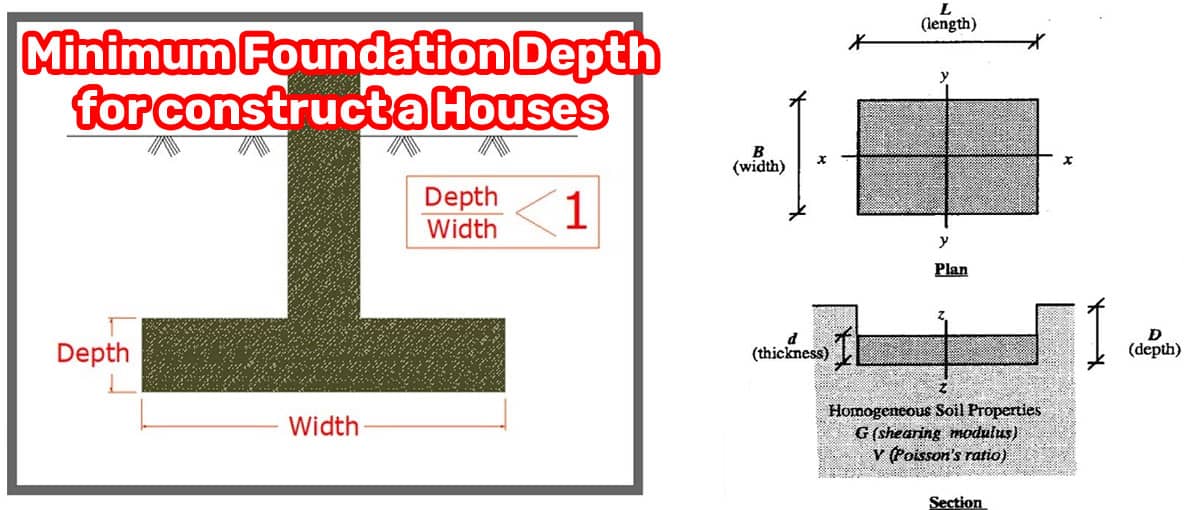Minimum Foundation Depth for construct a Houses

The foundation of a house is what holds the structure up, carries its entire weight. When you try to design a new building, you must consider how deep the foundation should be in order to properly support the building. This is called the foundation depth. It is measured by the vertical distance between the footing and the natural ground surface.
Expansive Soil
One thing to be kept in mind here that light soil has expansive properties. Due to wet and dry weathers, the soil can inflate and condense accordingly. This changes the effective natural ground surface level.
As a rule of thumb, foundations are placed under this level of soil, where such changes do not occur. That is about a meter in depth, in most cases.
However, this can be significantly higher if you have expansive soil or black cotton soil on site. This type of soil can take a load of 200-300 kpa only. Any more and the building will settle.
Groundwater Under Soil: Also, another thing to be kept in mind when deciding the minimum foundation depth is the presence of water under the ground. If the groundwater table is close to the foundation, then the soil under the foundation can flow around.
Water seeps up into the soil and makes it weak. To resist this, the bottom of the footing should be placed at a deep enough place where groundwater does not seep into the soil any more.
Cold Regions
Frost changes the nature of soil. It heaves the soil upward and that may create cavities underground. For this reason, in cold regions where snowing and/or ground frosts are normal, the foundations for outside columns or walls should be placed below the level down to which frost can affect the soil.
In the northern US, this can be as deep as 1.5 meters. Further, if the internal walls are heated, then the outer walls would require a deeper foundation so that the heat does not alter the soil properties.
Soil with Soluble Chemicals
Various types of solubles like chlorides and sulphates can be present in the soil at your building site. This may include organic or inorganic chemicals. These chemicals often cause corrosion effects in the foundation concrete. This is more common in areas surrounded by various industries. Here, foundations can be tricky. You can try several ways to combat this effect.
First of all, you can try to excavate all soil in the building footprint and replace it with new yellow soil. You can also use special types of concrete in the foundation which are resistant to such chemicals. Also, place the foundation below the level to which seepage of such chemicals is normally possible.
Foundations in different ground levels
If the building is supposed to rest on different ground levels, such as on a mountainside, then you need to consider the slope of the ground. This slope should not intersect a frustum of bearing material. Also, each foundation should be placed 2 feet below ground if it's rock and 3-4 feet below ground if it's soil. The sides of the footing should make an angle of 30 degrees with the horizontal.
